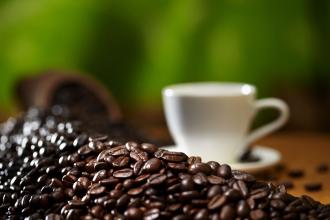Introduction to the unique and strong flavor and taste of Costa Rican coffee bean grinding scale varieties
Costa Rican coffee has full particles, ideal acidity and unique strong flavor. Costa Rica's coffee industry, originally controlled by the Costa Rican Coffee Industry Company (ICAFE), has been taken over by the official Coffee Committee (Oficinale Cafe). Among the exported coffee, those products that are considered to be of substandard quality are colored with blue vegetable dyes and then transferred back to China for sale. The coffee consumed in China (dyed blue or undyed) accounts for about 10% of the total output, and the local per capita coffee consumption is twice that of Italy or the United States. Other kinds of Brazilian coffee, such as Rio and Parana, can be produced in large quantities because they do not require too much care. Although the taste is rough, it is a kind of good and inexpensive coffee. Because it is distributed all over the country and its solid quality varies, it has its own standard (NO.2~NO.8 according to the number of sundries, NO.13~NO.19 according to the size of beans, and six grades according to taste). Almost all Arabica species are of good quality and stable prices, the most famous being Costa Rica, which has been a necessity of blended coffee since ancient times and is known to the public as Tarasu, located in the south of the country's capital SanJos é, is one of the most valued coffee growers in the country. LaMinitaTarrazu coffee is a famous local product, but its production is limited, about 72600 kilograms a year. It is grown on a piece of land called LaMinita, which is owned by nearly three generations of the McAlpine family in the UK. In fact, this land can produce more than 450 tons of coffee a year. However, Tarasu Latin American coffee is grown without artificial fertilizers or insecticides, and its harvest and selection are all done by hand, in order to avoid the damage to coffee beans caused by air jet selection to some extent. First, to win financial support from the government and to set up a "coffee trust fund" to help coffee growers in need tide over their cash flow difficulties.
Second, vigorously develop high-quality coffee, increase the added value of coffee exports, and make up for the losses caused by the fall in coffee prices. Its main approach is to focus on the cultivation of high-quality coffee from 1000 meters to 1500 meters above sea level, prohibit the collection of immature coffee beans, strengthen the screening of coffee beans, and pay attention to the environmental protection ingredients during planting and processing.
From 2002 to 2003, Colombia produced 3 million packets of coffee (60 kg each) and exported 1.87 million packets of coffee. 40% of the coffee exported is high-quality refined coffee, which is known internationally as "GOURMET coffee". In the international market, refined coffee costs an average of US $93.61 per bag (46kg) (FOB), which is US $19.56 higher than that of ordinary coffee. I also have a kind of refined coffee, which sells for $800 a bag.

Important Notice :
前街咖啡 FrontStreet Coffee has moved to new addredd:
FrontStreet Coffee Address: 315,Donghua East Road,GuangZhou
Tel:020 38364473
- Prev

Introduction of Puerto Rico Coffee Grinding scale Variety production area treatment Manor
Yaocote's choice of coffee, which is grown only on three farms in the southwest of the island, is fragrant and has a long aftertaste. This kind of coffee is very expensive and its flavor is comparable to that of any other coffee variety in the world. In the Yauco area, the coffee is owned and operated by local planters. The mountain climate here is mild, and the plants have a long mature period (from October to February of the following year).
- Next

Colombia Huilan Coffee Flavor Description Grind Scale Variety Taste Treatment Manor Introduction
Coffee is so deeply ingrained in Colombia that it has become indispensable for writers like García Marquez. One Hundred Years of Solitude, for example, which won him the Nobel Prize for Literature, has coffee in every chapter. Chapter 5 A dose of laudanum is added to the bride's coffee in order to prevent the wedding of the hero, Colonel Aureliano Buendía. the
Related
- Detailed explanation of Jadeite planting Land in Panamanian Jadeite Manor introduction to the grading system of Jadeite competitive bidding, Red bid, Green bid and Rose Summer
- Story of Coffee planting in Brenka region of Costa Rica Stonehenge Manor anaerobic heavy honey treatment of flavor mouth
- What's on the barrel of Blue Mountain Coffee beans?
- Can American coffee also pull flowers? How to use hot American style to pull out a good-looking pattern?
- Can you make a cold extract with coffee beans? What is the right proportion for cold-extracted coffee formula?
- Indonesian PWN Gold Mandrine Coffee Origin Features Flavor How to Chong? Mandolin coffee is American.
- A brief introduction to the flavor characteristics of Brazilian yellow bourbon coffee beans
- What is the effect of different water quality on the flavor of cold-extracted coffee? What kind of water is best for brewing coffee?
- Why do you think of Rose Summer whenever you mention Panamanian coffee?
- Introduction to the characteristics of authentic blue mountain coffee bean producing areas? What is the CIB Coffee Authority in Jamaica?

